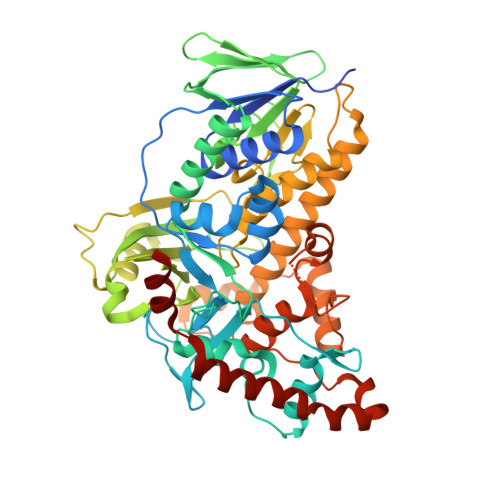Chlorination by a long-lived intermediate in the mechanism of flavin-dependent halogenases(,).
Yeh, E., Blasiak, L.C., Koglin, A., Drennan, C.L., Walsh, C.T.(2007) Biochemistry 46: 1284-1292
- PubMed: 17260957
- DOI: https://doi.org/10.1021/bi0621213
- Primary Citation of Related Structures:
2E4G, 2OAL, 2OAM - PubMed Abstract:
The flavin-dependent halogenase RebH catalyzes the formation of 7-chlorotryptophan as the initial step in the biosynthesis of antitumor agent rebeccamycin. The reaction of FADH2, Cl-, and O2 in the active site generates the powerful oxidant HOCl, which was presumed to carry out the chlorination reaction. Herein, we demonstrate the formation of a long-lived chlorinating intermediate (t1/2 = 63 h at 4 degrees C) when RebH, FADH2, Cl-, and O2 react in the absence of substrate tryptophan. This intermediate remained on the enzyme after removal of FAD and transferred chlorine to tryptophan with kinetically competent rates. The identity of this intermediate is suggested by the X-ray crystal structure of RebH, which revealed an active site Lys79 located in a central position between flavin and tryptophan binding sites and just 4.1 A above C7 of tryptophan. The chlorinating species is proposed to be a Lys-epsilonNH-Cl (lysine chloramine) from reaction of enzyme-generated HOCl with the active site Lys79. This covalent enzyme chloramine likely plays a key role in directing regiospecific chlorination of substrate in this important class of biosynthetic enzymes.
Organizational Affiliation:
Department of Biological Chemistry and Molecular Pharmacology, Harvard Medical School, Boston, Massachusetts 02115, USA.














